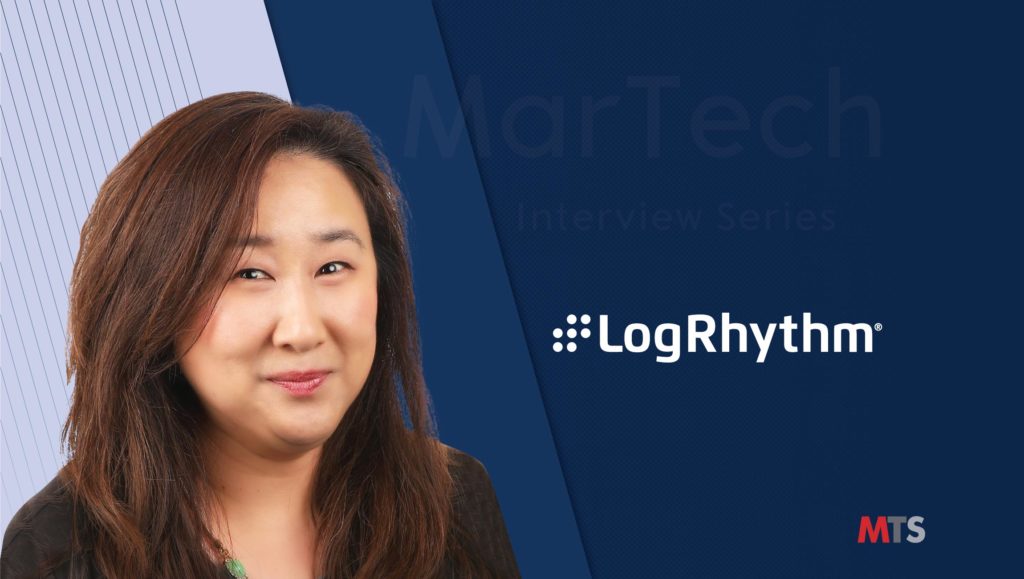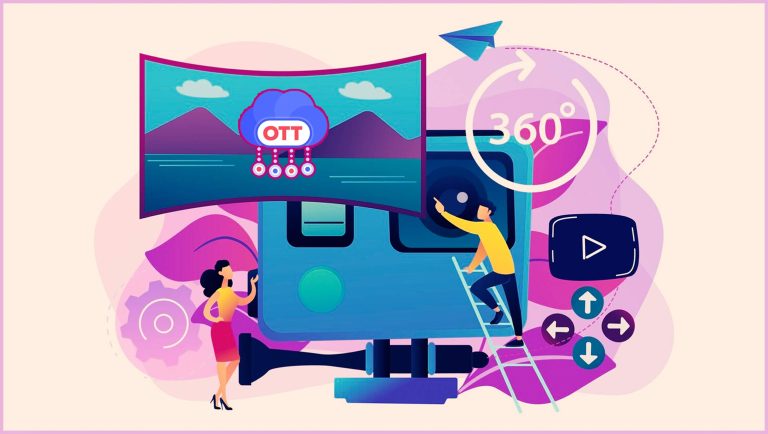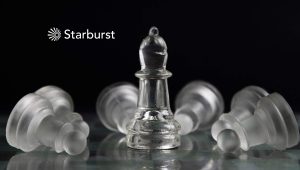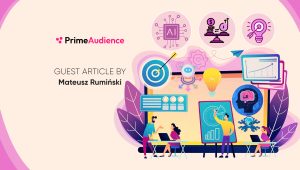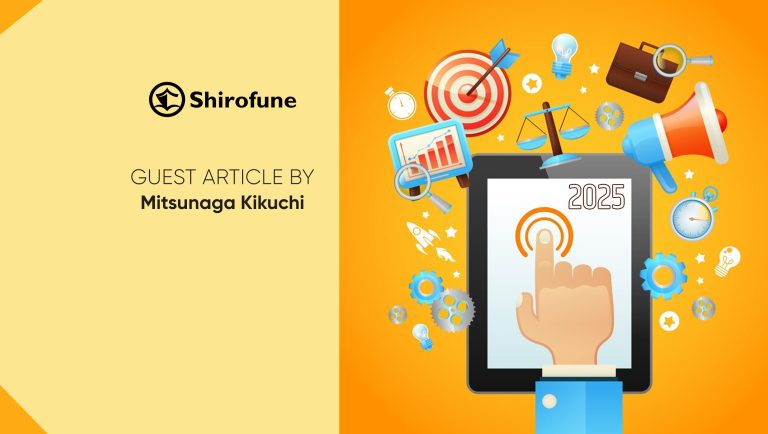“We can get to personalization at scale through AI and ML, which can lead to better engagement with our customers and partners.”
Hi Cindy, tell us about your journey into Marketing and Sales technology.
I’ve been in Marketing for longer than I want to admit and have held every role in Marketing — from Product Marketing to Corporate Marketing, and later Sales operations. I can genuinely say, “I’ve done that job!” The evolution of Marketing to a data-driven, revenue engine fueled the need to be a technologist. I love digging into the technology and figuring out how things work. Later, when I became an industry analyst, evaluating MarTech and SalesTech solutions became the core part of my job, and I enjoyed talking to both established and startup solutions.
You are a force to reckon with in the Sales Enablement and Demand Gen industry. What inspired you to start with LogRhythm after working with Constellation and IBM?
Although I don’t see myself as a “force to reckon with,” I’m flattered by the comment — thank you! I have a deep passion for transformation and enjoy being a part of a company where I can have an impact. My tip for anyone evaluating a company — whether to work for it or to invest in its stock — is to look at four strategic areas. LogRhythm is an incredible company that hits all four of these success criteria, so the decision was easy:
– Market – Cybersecurity software is the hottest space in enterprise technology. Our Security Information and Event Management (SIEM) software helps our thousands of customers detect and prevent intrusions.
– Financial strength – We’re a profitable company and part of the Thoma Bravo portfolio. Our continued stability helps our customers reduce their risks, while other companies in our space run at a loss with high burn.
– Reputation – Customers and industry analysts have rated LogRhythm highly, and we are the only security company to earn the “Gartner Peer Insights Customers’ Choice for SIEM” designation three years in a row. These are all based on independent customer reviews and we’re so proud of that!
– People – This is the most important factor. Leaders with vision, such as our CEO Mark Logan, and great team members ensure strong execution. We’re known for our company culture, and I’m proud to be a part of LogRhythm Nation.
As a woman CMO in MarTech, tell us some of the unique opportunities and challenges you have met? What message do you have for young female professionals in the Marketing and Demand gen departments?
I won’t sugar coat it: as an Asian-American female executive, the journey has its share of challenges. I have been mistaken for the admin in meetings, been mansplained to countless times, and had my work claimed by others as their own. You can get angry and walk around with a chip on your shoulder or use it to fuel you. It’s the “I’ll show you!” aspect that Angela Duckworth talks about in the book Grit (which I highly recommend reading).
Three things I tell every young woman I’ve mentored are:
– Strive for excellence in everything you do; you’ll eventually build a reputation for that.
– Be a lifelong learner – Marketing is ever-evolving, so always keep an eye open for new Marketing/Sales strategies, technology that’s on the horizon, etc.
– Always maintain a positive attitude. I’ve seen women react to slights with anger and frustration. Remember that you can’t change what happens to you, but you can control how you react to it. Many of my mentors, supporters, and advocates are men. What we want is to build understanding.
Oftentimes, we women hold ourselves back. We are usually the first to volunteer for “office housework” – taking notes, planning the birthday party, being on the decorating committee, etc. Not that those things are bad if they interest you, but if it gets in the way of, for example, listening in on a strategy meeting, volunteering to be a part of M&A or integration team – those visible initiatives that help you learn and get you on the executive radar —you’re simply killing yourself with busy work without the potential for career progression. So don’t be afraid to reach for the big projects! Ultimately, I want to see more women in STEM, as CEOs, and on corporate boards. This is an area I’m passionate about.
We saw some of the biggest M&As in MarTech and Sales Tech in 2019. What cue did you take from these tech M&As to build a Marketing roadmap for 2020-2024?
Whenever there’s M&A activity, that’s a sure sign it’s a space you want to look closely at. For example, there are so many Sales Enablement technology providers now that didn’t exist 3-4 years ago when we first started the Sales Enablement Society. I look at tech with the lens of:
– Is there a clear tie to increasing Sales?
– Does it provide insight or analytics on how to grow?
– Does it make a previously cumbersome process simple (saving time)?
I’m always on the lookout for great tech that meets these objectives to bring into our Marketing strategy.
Sales Enablement, Content and Enterprise Communication
What are your thoughts on the blurring boundaries in Content Marketing and Sales Enablement? Who owns and accounts for the success and failure of a Sales Enablement model in the organization?
There needs to be an executive champion who is accountable to the enablement program, but it’s everyone’s responsibility in the company to contribute to the content. Building a strong bench of employee SMEs to write and develop content gives a platform for both the company and the employee to build their brands.
I am thrilled to see so many jobs now with “Sales Enablement” in the title, but beyond the title, the revenue team (Sales, Marketing, Customer Success) needs to agree on what the success metrics are and what the expectations are for the role. Giving a title without the ability to own and drive progress is a waste of the role.
Tell us more about your Sales Enablement approach and how it engages with Sales and Customer Service departments to solve unique challenges that your customers often raise.
You can’t have different purposes for the three functions of Marketing, Sales, and Customer Success. I’ve often quoted Peter Drucker: “The purpose of business is to create a customer.” Stop thinking in silos and recognize that our goals are the same – to create a customer. If you remember that as your north star, then review every challenge presented by asking “how does this help with creating a customer?” That will help you reframe the problem.
What kind of Marketing and Sales campaigns have you run to boost revenue-generation for The LogRhythm NextGen SIEM Platform? What Marketing challenges do you face in SIEM Market?
We’re excited about our new 2020 campaign theme — all centered around celebrating our customers. We’re debuting our theme and new look starting at the RSA Conference the last week in February. We’re fortunate to be in a hot market with a high demand for cybersecurity software.
The SIEM market is a great one to be in, and like all great markets, there are established organizations and newcomers joining the list of providers for customers to choose from. I believe our reputation for partnering with our customers to ensure their success is what sets us apart. In our industry, not being in the news for a data breach or hack is a success for our customers!
Which Marketing, Sales and Employee Communication tools and applications do you use at LogRhythm?
We have a great tech stack and I’m looking into bringing on more top solutions to augment our marketing strategy. We use Marketo, Salesforce (Sales Cloud, CPQ, Community), Clari, SalesLoft, PathFactory, Oktopost for social, and DiscoverOrg to name a few.
Our HR team also runs an employee rewards program powered by Kazoo called YouEarnedIt! Managers and employees have the ability to recognize each other for great work with points that can be redeemed for swag or gift cards. I personally love the program, and we’re looking at expanding its use for marketing and to reward employees contributing content.
Team Building and Predictions
What kind of coordination do you maintain with your CEO, COO, CIO, and CTO? What are the usual points of disagreements in these functions?
Our executive team is closely aligned. I’m fortunate to know our CEO Mark Logan well after working together for nine years, and we’re now at our fourth company together. There’s a level of trust and mutual respect that I am extremely grateful for, and Mark is a leader I’ve learned a lot from.
Our CIO Rex Young and I are in constant communication around our tech stack. I know enough Salesforce administration skills to be dangerous and we’re sympatico when it comes to technology adoption in the company.
We don’t have a COO, but we have one of the world’s top Chief Security Officers: James Carder, who recently won the Colorado Technology Association’s 2019 CISO of the Year award. He’s been a great supporter of Marketing when it comes to PR and content. James’s peers are our customer profile, so he’s been a tremendous help to marketing.
Two roles you did not identify in the question that I encourage all CMOs/marketers to partner with are:
– The CFO and the finance organization: Knowing your numbers and the ability to tie marketing performance to revenue generation is critical to have a seat at the table.
– Customer Success executive: Companies with strong customer net retention rates have better corporate performance and value. Marketers need to look beyond new businesses and create strategies to increase engagement with existing customers.
What does your usual day at work look like? How do you maintain a work-life balance on your busy days?
Right now, I’m commuting from the D.C. area to LogRhythm’s global headquarters in Boulder nearly every week. A typical workday includes 5-6 hours of meetings and calls with a mix of customers, team members, sales leaders, and partners.
I implemented agile marketing and every day for 15 minutes, my global marketing leaders and I have a stand-up meeting. We go through items we prioritized in sprints and resolve roadblocks on the fly. These daily meetings are a huge help to prioritization and team communication; I highly recommend this approach to any executive.
On the life side, I don’t have great advice here except that instead of striving for balance, recognize that sometimes, one side will have precedence over the other. When I’m with my husband and family, I make sure I’m fully present and not distracted by my phone. Cultivating consistent habits also helps. For example, when I’m traveling, I always call or text my husband before I take off and after I land; it’s a reminder to be in communication and check-in.
We’re seeing a rampant adoption of AI, Blockchain, and RPA in the SaaS and Cloud businesses. What approach should CMOs take in digitally transforming their functions and operations with AI ML, RPA techniques?
CMOs need to learn, understand, and keep an open mind with these technologies. We are one of the most resilient and change-adapted functions when it comes to innovation. In my early days as a marketer, counting impressions and spray and pray methods were the norm. Now, we can use AI, ML, and RPA technologies to increase personalization, run data analysis to find patterns to identify trends and run microtargeting campaigns to really get granular. All of this is part of our ability to always focus on getting better at what we do.
How do you prepare for an AI-centric world as a Business Leader?
I embrace it: innovation will keep pushing us forward and we should encourage our teams to learn and understand what AI can and cannot do. On the positive side, AI improves productivity and reduces previously manual tasks. We can also get to personalization at scale through AI and ML, which can lead to better engagement with our customers and partners.
This Is How I Work
How do you inspire your people to work with technology?
Lead by example. If you understand it and actively use it, they will pay attention. Peak their curiosity and then help them learn it.
One word that best describes how you work.
Action – make it happen!
One superhero character that you idolize or profoundly connect with in your life and at work –
Maybe this is because the live-action movie is coming out, but I thought of Hua Mulan. She wasn’t a superhero in a comic book sense, but I think her spirit is what people can learn from. Mulan’s intent was to help her family by taking her father’s place in the Chinese imperial army. She went through many challenges and ended up thriving in an unexpected arena. The lessons are a love of family, honor, and a sense of duty.
What startups in the technology industry are you watching keenly right now?
I love all the personalization at scale technologies, the now booming Sales Enablement platforms, and the companies with a keen focus on partner enablement and engagement.
Something you do better than others – the secret of your success?
Empathy. Care about your customers and your team, and seek to understand their objectives.
Tag the one person in the industry whose answers to these questions you would love to read.
One person is too hard, so I’m going to tag a few more. 
Thank you, Cindy! That was fun and hope to see you back on MarTech Series soon.
Cindy Zhou is the CMO of LogRhythm. She was the former CMO of Level Access and a VP and Principal Analyst Constellation Research covering Digital Marketing Transformation and Sales Effectiveness. With over 18 years of practitioner experience in corporate marketing, product marketing, product management, and sales operations,
Zhou has spearheaded marketing transformation at multiple technology companies. Previously, Zhou was Global Senior Vice President of Marketing and Sales Operations at BackOffice Associates. Zhou led worldwide demand generation for the procurement, supply chain, commerce and merchandising lines of business for IBM after they acquired Emptoris where she led corporate marketing and global demand programs.
Her business career includes Rivermine, China Telecom, and MCI Telecommunications.
LogRhythm is a world leader in NextGen SIEM, empowering organizations on six continents to successfully reduce risk by rapidly detecting, responding to and neutralizing damaging cyberthreats.
The LogRhythm platform combines user and entity behavior analytics (UEBA), network traffic and behavior analytics (NTBA) and security automation & orchestration (SAO) in a single end-to-end solution.
LogRhythm’s Threat Lifecycle Management (TLM) workflow serves as the foundation for the AI-enabled security operations center (SOC), helping customers measurably secure their cloud, physical and virtual infrastructures for both IT and OT environments.


